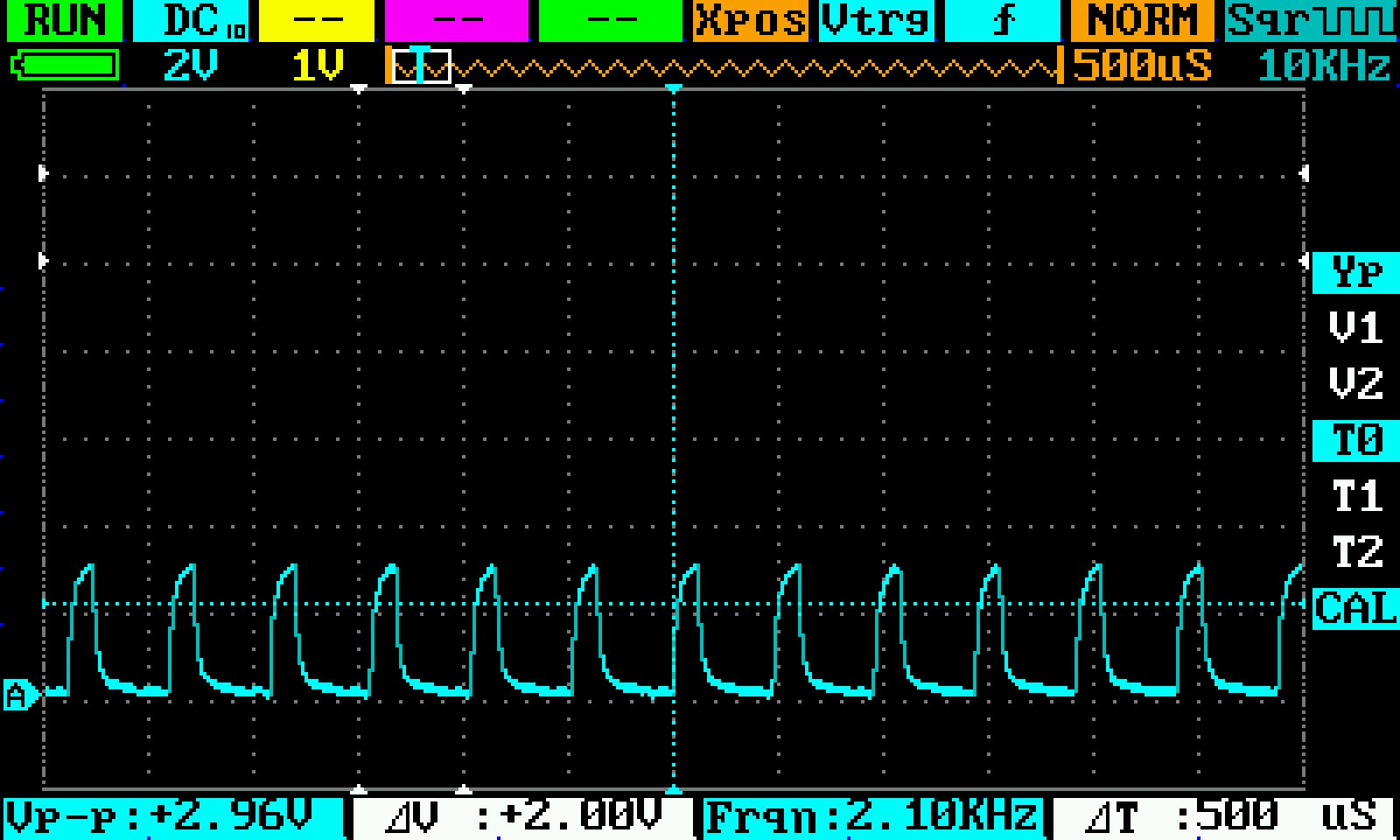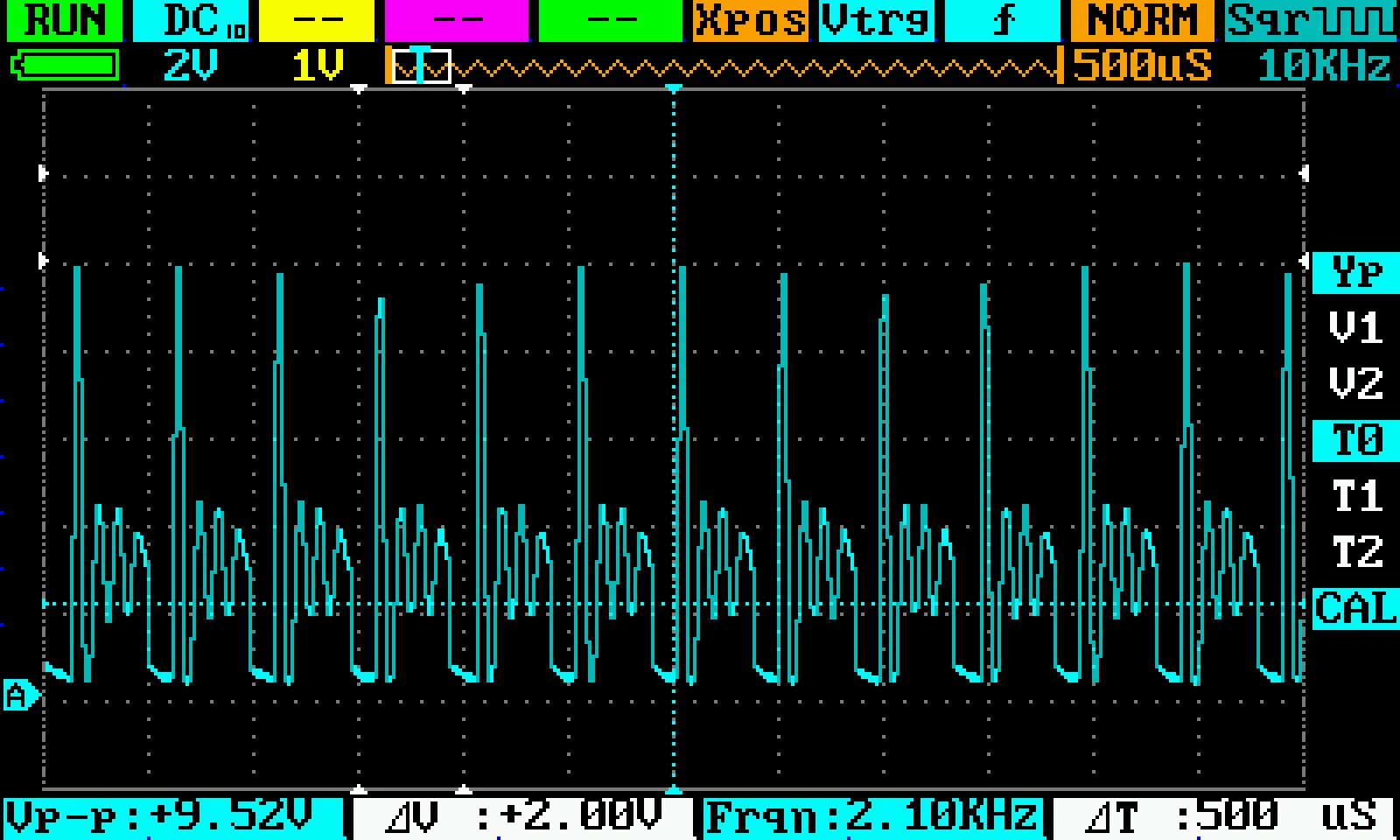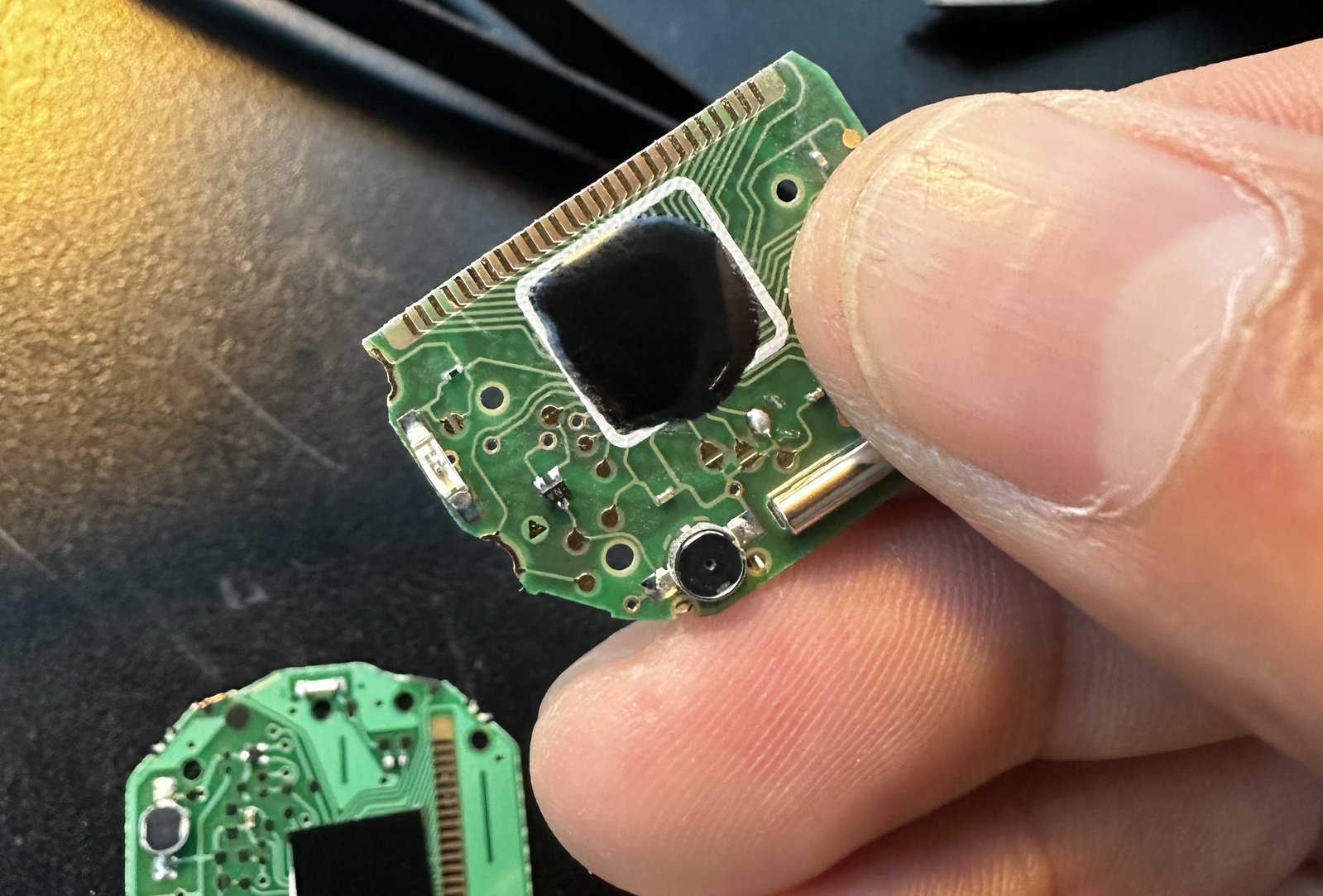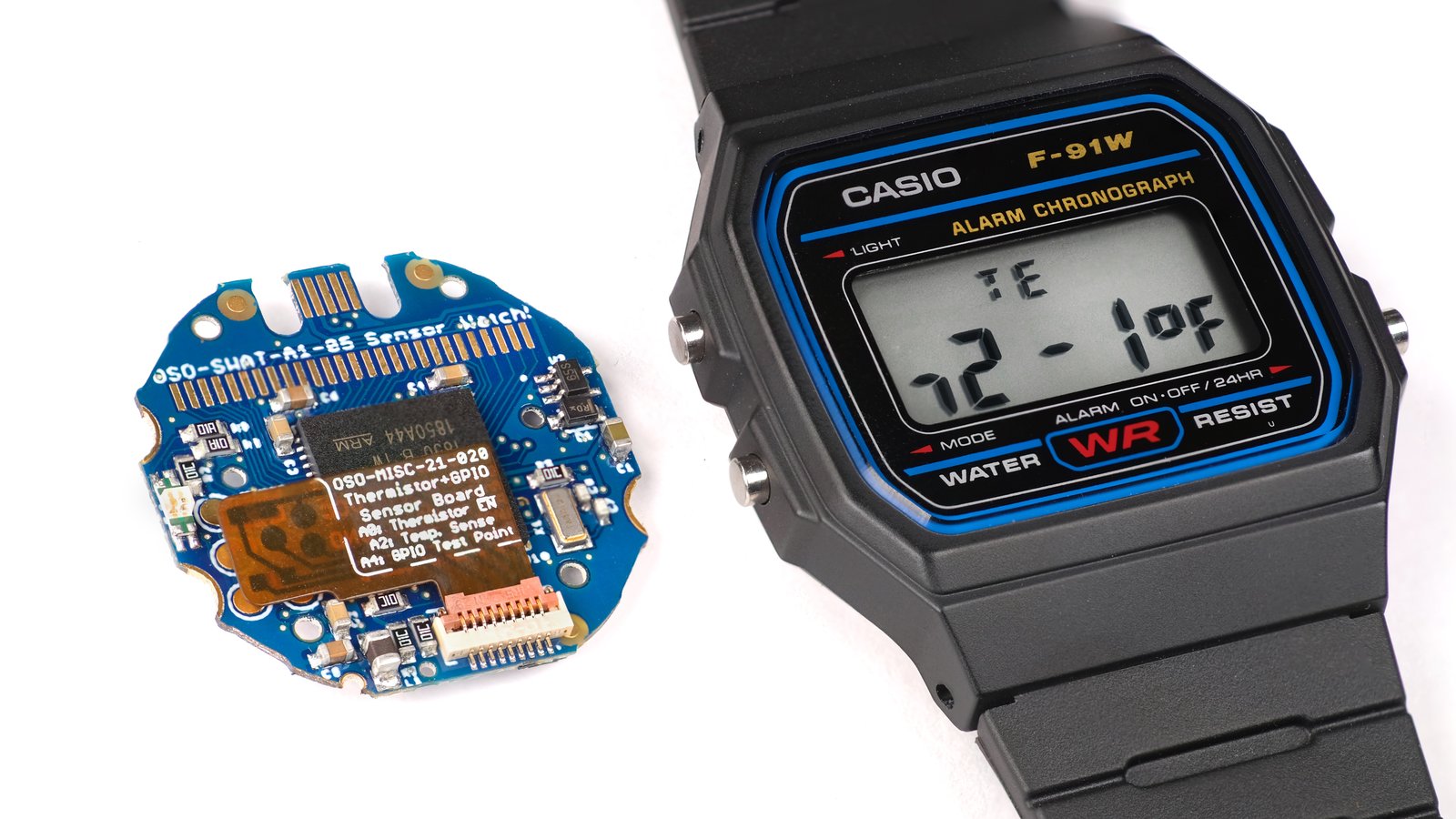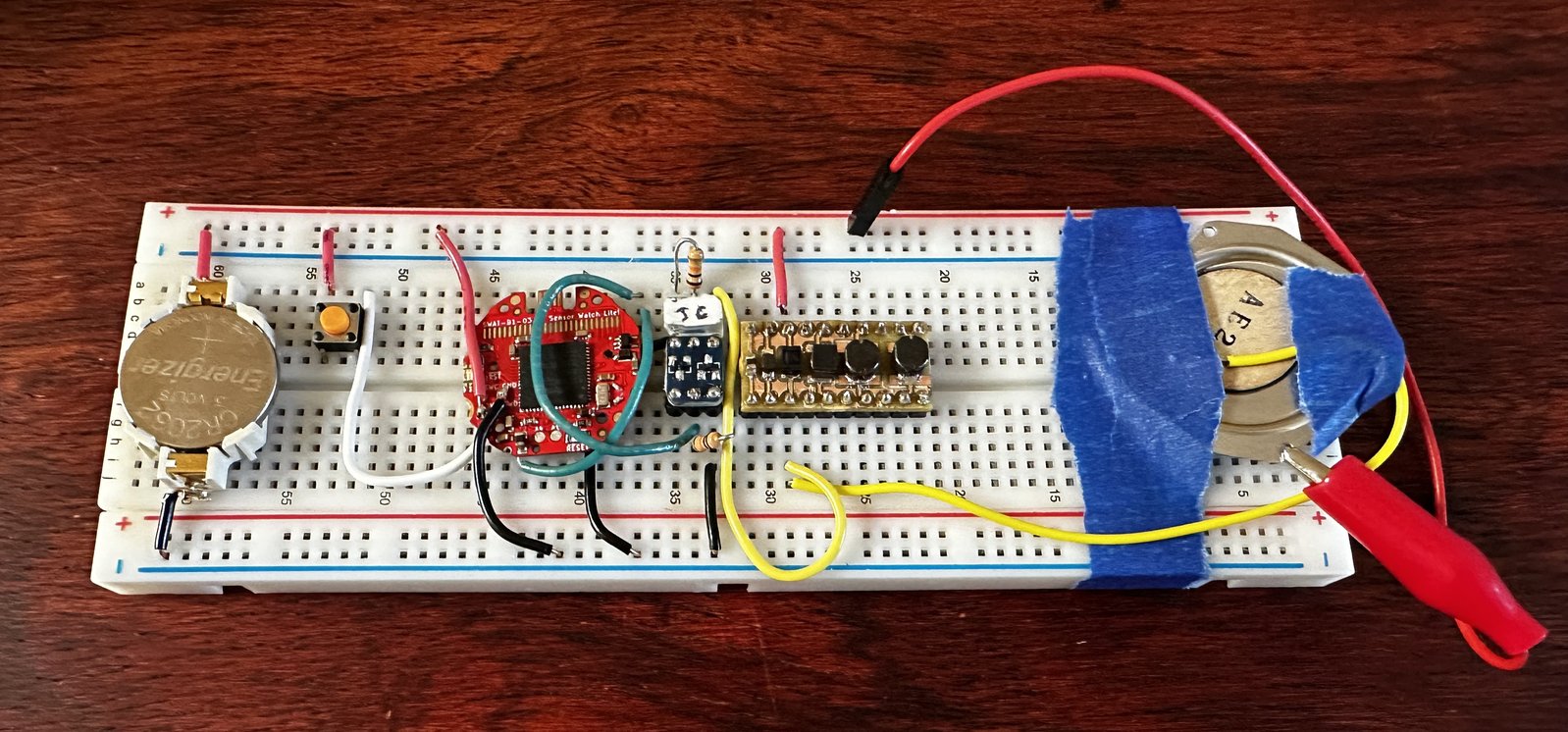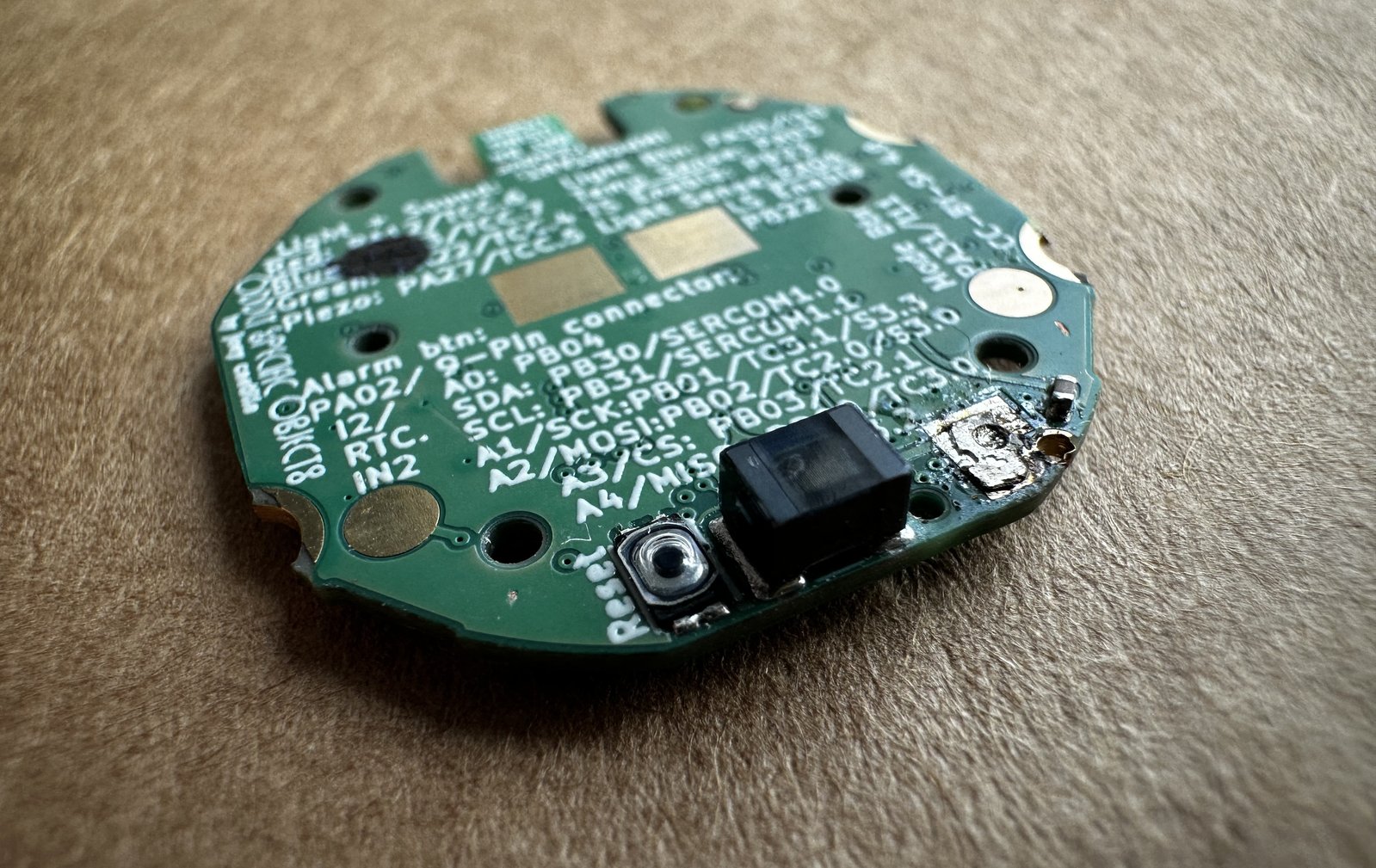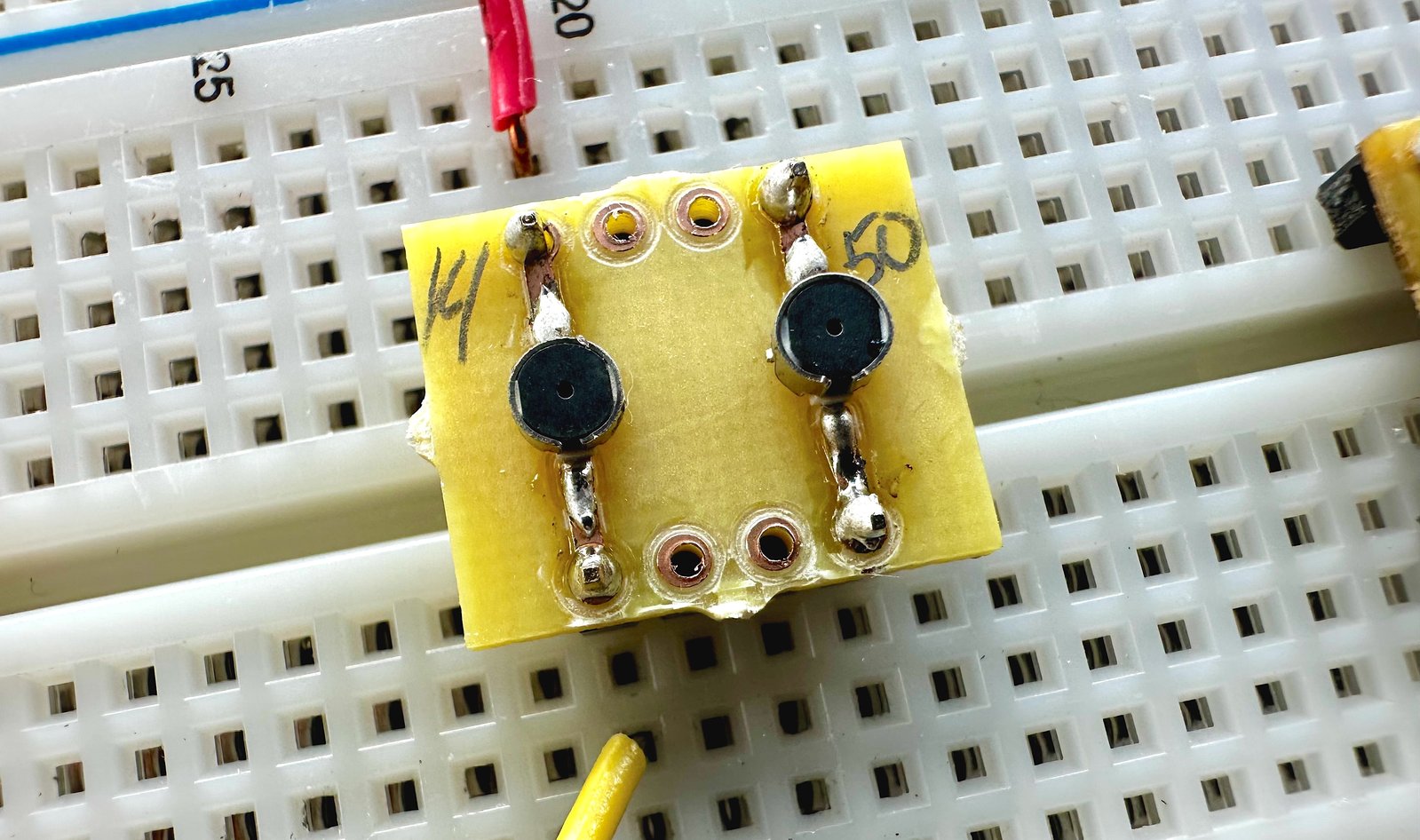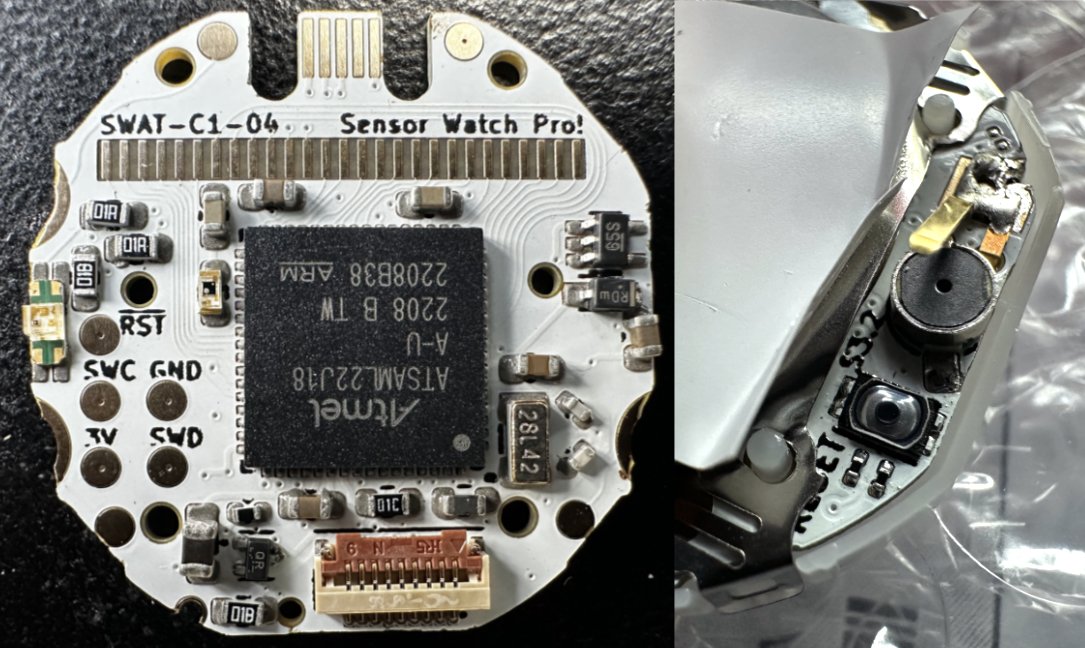Project update 3 of 6
The Enchanted Inductor: How We Made Sensor Watch Pro’s Buzzer LOUD
by Joey CastilloLet’s start with this for background: the classic Casio F-91W has a disc-shaped piezo buzzer embedded in its metal backplate. When you shove a moving voltage across it, the piezoelectric effect causes it to vibrate, and if you do that at an audible frequency, you get a beep. When that beep comes out, its volume depends on the voltage you gave the buzzer: more voltage means more louder, and more louder means more better.
The TL;DR of all this can be seen in these next two images: first, a plot of the voltage across the buzzer in Sensor Watch Lite. It’s got a peak-to-peak voltage of about three volts, the voltage of the coin cell.
Next is the same plot, but for Sensor Watch Pro: 9.5 volts, peak to peak. More voltage, more louder, more better.
This 9.5 volt peak-to-peak signal makes the buzzer on Sensor Watch Pro loud: as loud as the classic Casio, for the most part, and yeah. You have no idea how happy it makes me to share this plot with you. Getting this done involved component sourcing deep-dives, a smorgasbord of cursed inductors, a half dozen prototypes, and at least one leap of faith. At one point, I believed it impossible.
In the end, it came down to not letting the impossible stop us.
The Quest
You may be wondering why I thought it so impossible to make the buzzer louder, when Casio ships eight million F-91W’s a year with a buzzer that’s plenty loud. Well, it comes down to how the Casio does it, versus what we can do. Every F-91W ships with a little part on the front of the board. It’s the round, black thing at the bottom left: an inductor, which is basically a coil of wire wrapped around a tiny metal core.
Without going into the electrical details, I will just say this: the F-91W uses this coil to boost the voltage going to the buzzer. So, great! We can just replicate this circuit in Sensor Watch, right?
Well, not so fast: there are a few problems there. For one thing, we didn’t leave much room on the board.
On the classic Sensor Watch, we used that bottom-left area for a couple of resistors, as well as a different inductor: that boxy grey part, 0.8 × 0.5 mm in size, that helps the CPU with generating the voltage it needs to operate.
So we don’t have room for it, and that’s a problem.
The other big problem is finding a small enough inductor. To help the CPU generate the voltage it needs, we only need an inductor with a modest value of ten microhenries, or µH. To boost the voltage to the buzzer? We’d need 14,000 µH. That’s more, by orders of magnitude, and we don’t have orders of magnitude more space. If anything, we have less.
The 14,000 µH inductor on the Casio is a scant 3.3 millimeters in diameter. Searching Mouser for parts with a similar value, I couldn’t find anything smaller than 5 mm across — too big to fit into the watch case.
Nevertheless, I ordered some stuff for testing.
From the left, this menagerie of inductors ranges from 100 µH to 15,000 µH, and fully half of them had no hope of fitting in Sensor Watch Pro. Still, I tested all of them for buzzer loudness and power consumption. I breadboarded, using Sensor Watch Lite to drive the circuit, and with a variety of transistors and MOSFETs:
I even went so far as to fabricate a prototype with one of these cursed inductors — 1,340 µH, which I hoped might be enough — soldered onto the back side, the only place I could reasonably fit a part that chunky:
In the end, I discovered that 1,340 µH would not work: it wasn’t loud enough and, in spite of that, it still managed to consume more power. I really would need on the order of 14,000 µH to get this done and, alas, the only in-stock inductor I could find with that value was far too big to fit in the watch case.
So I expanded my search to out-of-stock components… and found something.
The Enchanted Inductor
I will spoil the ending here and say I did find a part that fit the bill: the ELT-3KN004B can, in fact, boost the buzzer voltage. The bad news: it was out of stock. The worse news: the manufacturer, Panasonic, had declared it end-of-life.
The only good news: Mouser had ordered 3,477 of these inductors before the last buy date. So I locked in a backorder for all of them.
Why did I make this leap of faith, and order all of these tiny coils sight unseen? Well, I did some research and ordered another similar part in the same series. In this photo, the part on the right is a similar part, the ELT-3KN028C, and the part on the left is an inductor yanked from a Casio watch movement.
In my expert opinion, that part yanked out of the Casio has got to be the enchanted inductor, the ELT-3KN004B. It looks the same, right down to the dimple in the center, it has the same footprint, and its dimensions match the drawing in the data sheet to a fraction of a millimeter. It’s a leap of faith, to be sure, but it’s an educated one.
I also banged out a quick prototype (with salvaged parts!) to confirm that yes, the plan would work.
For the final design, I ended up moving the inductor to the front side, since it would simplify manufacturing, but in the end this penultimate prototype was a success. It convinced me that this thing I once thought impossible was something that I could, in the end, deliver.
A very particular set of parameters
Anyway, the other reason I ordered all of these inductors is that I don’t think another part exists with the same set of parameters: it’s got high inductance — 14,000 µH — but it’s also tiny, since it’s only rated for very small amounts of current (which means it can use thinner wire). It’s a weird part that frankly only seems useful for the Oddly Specific task we have at hand here. We even asked Panasonic if they had any guidance on a replacement part and they said they were exiting this line of business — which means this backorder might contain the last of these ever made.
So yeah, in making this leap of faith, I’ve secured enough of the enchanted inductors to make 3,400 Sensor Watch Pro boards with a delightfully loud buzzer. After that, it might become impossible again.
But we haven’t let the impossible stop us yet…
